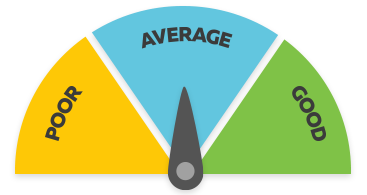Graphic Designer
Kaihoahoa Whakairoiro
Alternative titles for this job
Graphic designers create artwork or designs for printed and electronic media such as magazines, television and websites.
Pay
Graphic designers usually earn
$54K-$90K per year
Graphic designers can earn
$49K-$116K per year
Source: TEC research.
Job opportunities
Pay
Pay for graphic designers varies depending on skills, experience and employer.
- Graphic designers usually earn between $54,000 and $90,000 a year.
- Graphic designers can earn between $49,000 and $116,000 a year.
Source: TEC research.
- PAYE.net.nz website - use this calculator to convert pay and salary information
- Employment New Zealand website - information about minimum wage rates
(This information is a guide only. Find out more about the sources of our pay information)
What you will do
Graphic designers may do some or all of the following:
- discuss project requirements with their client
- discuss the project with colleagues
- develop design ideas by researching and brainstorming with colleagues
- prepare sketches, instructions and layout diagrams
- create designs for different media
- suggest production methods, materials and costs
- show design ideas to the client
- receive client feedback and alter the design accordingly.
Skills and knowledge
Graphic designers need to have:
- knowledge of art materials and techniques
- the ability to use colour and design effectively
- expertise in printing and production methods
- knowledge of advertising and marketing, and how people think and react to visual images
- awareness of current market trends
- artistic ability, including good sketching, drawing and painting skills
- the ability to use computed-aided design (CAD) and creative software
- the ability to understand clients' needs and turn them into suitable designs.
Working conditions
Graphic designers:
- usually work regular business hours, but may be required to work evenings and weekends to meet deadlines
- usually work in offices and studios, but may also work from home or travel locally to attend photo shoots
- work in conditions that may be stressful due to deadlines.
What's the job really like?

Mary Pickett
Director, MCP Design
Expect to start in a junior role
"I went to uni and studied visual communication and design and it was a case of finding any job I could when I graduated, which was working for smaller companies in junior roles. This often meant following templates that were already set-up and getting design experience that way."
Working with clients best part of the job
"What I like about the job is the creativity, and being curious about people's businesses and their goals. It's quite interesting dealing with people."
"I meet with clients and discuss not just the job, but also their business so I can get to understand it. I'll then work on concepts on the computer and take them back to the client to see which direction they like best. I enjoy helping them to think differently about how they can achieve their goals – I enjoy seeing them light up when they hear new ideas and get excited."
Networking and refreshing skills important
"It's important to keep learning, keep your skills up to date and be aware of trends. If you're freelancing it's really important to keep making contacts, as cold calling for new clients can be challenging. Always take advantage of any organised business networking opportunities in your area – you never know who you are going to meet!
Networking usually works best through social interactions – which was how I was able to land several dream projects such as the art direction and design of a coffee table book for a major agricultural company."
Graphic designer video
Simon Ellery talks about being a graphic designer – 2.26 mins.
I work at my design agency where we do a variety of graphic design
solutions.
This is our burrow where we get all of the actual design work done.
There's Nicole here who's our senior designer, Shevonee, Finn here who's interning.
Here's where I sit. I've got a candy stash back here, so that's pretty good.
A graphic designer makes images on the computer that
companies use to represent themselves.
You might be working on something like a logo or a business card or maybe a
website. So this one is an electrical company. Yeah,
it starts with sort of sketching some initial ideas,
then working on different combinations of letters or shapes,
and then we'll bring it into the computer.
We've got about 20,000 fonts here, ,
so it was like going through the different fonts and seeing what might have the
right look and feel for that brand,
seeing what's gonna fit in best with the client's goals and their target audience.
One of my favourite things about being a graphic designer is when you
strike that magic balance between something that's simple and
distinctive with your creative solution. And then the cherry on the top of that
is when the client also agrees.
I learnt some very bad Photoshop effects in high school ,
so doing all the things you shouldn't do. And then actual uni,
I was learning more of the actual design principles and techniques in how to work the software.
So I studied graphic design and worked 2 or 3 jobs in
the graphic design field until I decided I wanna do my own thing and go out as
a freelance graphic designer. So you don't need a degree to be a designer.
It's really just that bit of paper that I think helps to show an employer that
you're qualified.
You can generally learn a lot of graphic design online these days.
So we're about to go into a meeting with a potential client.
They've inquired about a whole range of services actually, so, uh,
branding, web design and print design. We'll see what we can offer them.
So it is important to learn about the business side of things or marketing
because there's always gonna be invoicing and client communication and it is
important to at least be okay with that.
If I could give one piece of advice to someone starting a career in design,
it would be go the extra mile with your portfolio.
So if there's a design agency that you admire,
look at the work they're producing and do some mock projects that are similar
and, and showcase that you can do that sort of work.
Entry requirements
You usually need a qualification to become a graphic designer and experience may be useful.
You may need:
- a relevant tertiary qualification
- examples of your work
- experience in similar work.
Secondary education
You usually need NCEA Level 3 to do the study or training for this job. Useful subjects include design and visual communication (graphics), design (practical art), digital technologies, English, te reo Māori, art history, maths and painting, sculpture, photography, printmaking combined.
Personal requirements
Graphic designers need to be:
- organised
- motivated
- creative
- accurate, with an eye for detail
- able to accept criticism
- able to work well under pressure
- problem solvers
- good at communicating, and able to work well in a team.
You need to be artistic, methodical and detail orientated. You also need to be able to think laterally, be curious and be willing to learn.

Mary Pickett
Director, MCP Design
Useful experience
Useful experience for graphic designers includes:
- art or design work
- advertising or marketing work
- publishing or printing work
- media production work
- typographic work (working with type, font and page layout).
Find out more about training
What are the chances of getting a job?
High competition for graphic design jobs
Competition for graphic design vacancies is strong. For graduates, chances of getting a job are best if you have work experience as a Mac operator or as a freelancer on short-term graphic design contracts.
Employers prefer graphic designers who can work across all media, including print, video and digital.
Chances good for experienced designers
Job vacancies for experienced graphic designers have been increasing.
According to the Census, 7,461 graphic designers worked in New Zealand in 2018.
Types of employers varied
Graphic designers may work for:
- design and advertising agencies
- print production and publishing companies
- film and multimedia companies
- web design companies
- signmaking companies.
Some graphic designers do freelance work.
Sources
- Pickett, M, director, MCP Design, careers.govt.nz interview, September 2018.
- Ministry of Business, Innovation and Employment, 'Jobs Online Quarterly Report July 2017-July 2018', 2018, (www.mbie.govt.nz).
- Stats NZ, '2018 Census Data', 2019.
- Yoobee website, accessed September 2018, (www.yoobee.ac.nz).
(This information is a guide only. Find out more about the sources of our job opportunities information)
Progression and specialisations
Graphic designers may progress to set up their own graphic design business, or move into management roles at graphic design companies.
Graphic designers may specialise in a particular area, such as:
- advertising
- animation
- digital design
- illustration
- print publishing
- user experience design
- visual effects
- web design.
Last updated 28 March 2025


